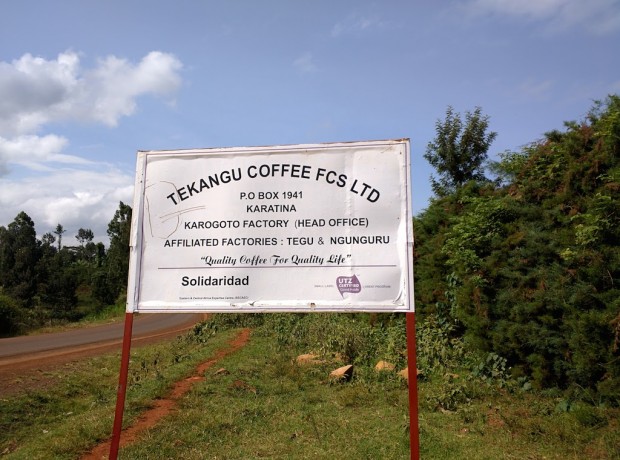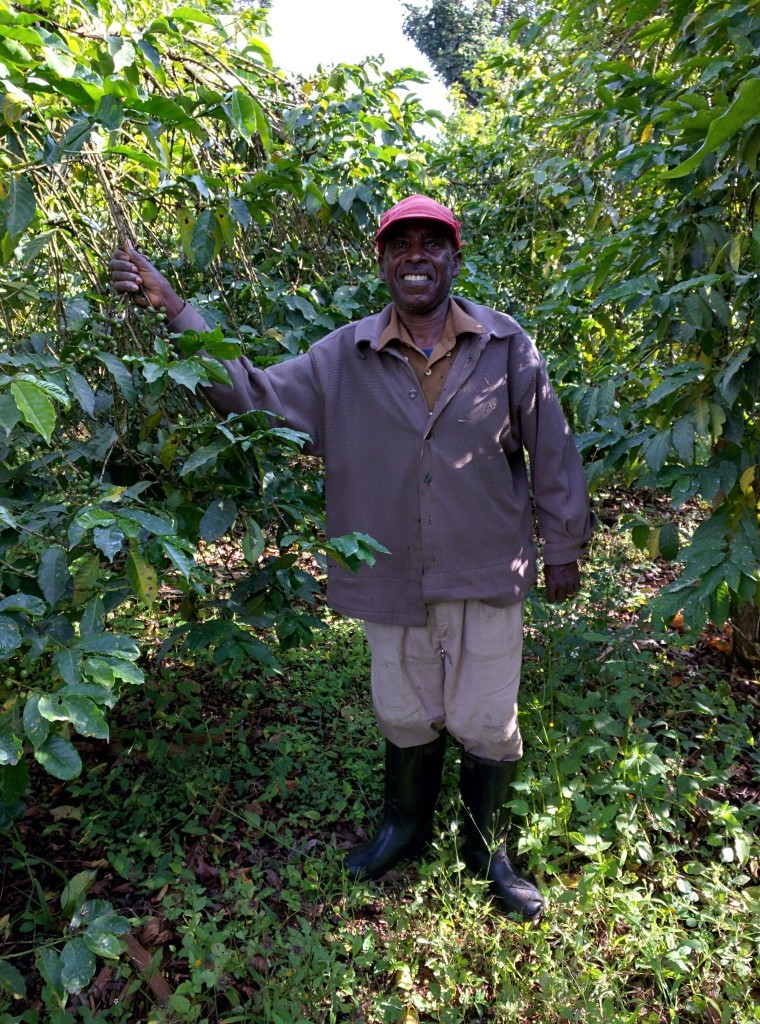A few weeks ago, NPR ran an article on the disappearing smallholder cocoa farmer. A few days ago, Michael Sheridan brought to our attention a Guardian article on the plight of small farmers globally, and gently reminded us that this isn’t a new story, especially not for specialty coffee. The list of challenges for small farmers are a near trope for those of us who work at origin with coffee (or cocoa).
Coffee farmers are aging. Children of farmers don’t see a future in farming. Many farmers are making less than a dollar a day per person in their household. Farm sizes are small and continue to shrink due to population pressures. Small farmers lack access to technical assistance and financial services and are often price takers in the market. This litany of challenges is enough to make anyone walk away from farming coffee.
I was recently in Kenya, visiting some farms in Nyeri county. Nyeri is an incredible coffee origin, with some of the mills producing coffee for some of specialty coffee’s leading roasters. I paid a visit to the Tekangu society’s mill at Karogoto to talk to the manager and to learn about some of the innovative processes they have there — the guest book bore the signatures of George Howell (George Howell Coffee), Tim Wendelboe (Tim Wendelboe), Colby Barr (Verve Coffee Roasters), Darrin Daniel (Allegro Coffee
) and others.
At Karogoto, there is a clear link between quality and the market, and farmers are compensated based on quality. Depending on the global price of coffee, there could be as much as a 40 Kenyan schillings (KES) difference per kilo of cherry (approximatelely $.40 USD) between AA graded coffee and the lowest grade they use, T. It was one of the few examples that I have seen where the incentive for producing quality was really backed with a clear financial incentive. In exchange, the farmer earned more money for his coffee (Karogoto AA was selling for $3.15 per pound at the Kenya Cooperative Coffee Exporters in Nairobi). Yet even at this price, it may not be enough to keep coffee farmers farming.
This amazing coffee — grown at 1,700 meters — comes from a lot of extremely small farmers. The British left their legacy of imperial measurements in Kenya and so the area is measured by acres (.4 of a hectare, .58 of a manzana, or 90 percent of an American football field). The average coffee farmer in Nyeri county typically has a little over an acre to farm, but only a part of this is dedicated to coffee. In our project that I visited, the beneficiaries measured their coffee gardens by the number of trees that they had on the farm. They had 150 coffee trees, 200 trees, sometimes a bit more (yes, the planting density was lower than in Latin America). They hoped to get five to seven kg of cherries from each tree, or about the equivalent of 1 to 1.2 kg of washed coffee per tree. Basically, Nyeri county is so populated where coffee is grown that there aren’t any real large lands available, and as a family grows, each plot gets subdivided as children inherit the family farm. When families have five, six or seven children, you can see how the farm sizes will dwindle quickly.
A similar story exists in parts of Guatemala, where land sizes are so small that areas of coffee are measured in tareas. Sixteen tareas make up one manzana, or approximately .86 of a hectare. Many of the farmers in the areas that CRS works in Guatemala have small farms with 4, 6, 10 tareas of coffee — areas less than half a hectare. I could go on with the geographic examples.
The bottom line is that price premiums won’t lift these farmers out of poverty. Nor should it be incumbent solely upon the roasters and exporters to keep small holders engaged in the supply chain. Keeping small farmers in coffee (and cocoa) value chains will take more than just a market-based approach. Rather, local governments need to be engaged in creating solutions and facilitating investment into the farms. Farmers themselves need to diversify their farms, creating portfolio of crops that provide return throughout the months and years (Pierre Ferrari called it “a wicked problem” at this years’ SCAA Symposium
). Beyond providing production and market advice, international aid must be funneled into changing systems and structures that will foster lasting change.
It has taken us a while to warm up to this idea — you are asking an NGO that is built on proposing and executing projects to spend time and resources on fostering changes with stakeholders who are normally outside the normal “project” realm. But by identifying the local agents of change, and including them into our projects, we can hopefully create lasting positive impact and keep smallholders as an important and integral part of the value chain.
Kraig Kraft
Kraig Kraft is the CRS Technical Advisor for Coffee and Cacao for the Latin America/Caribbean. He is Based in Managua.
Comment
1 Comment
Comments are closed.








Very Interesting.